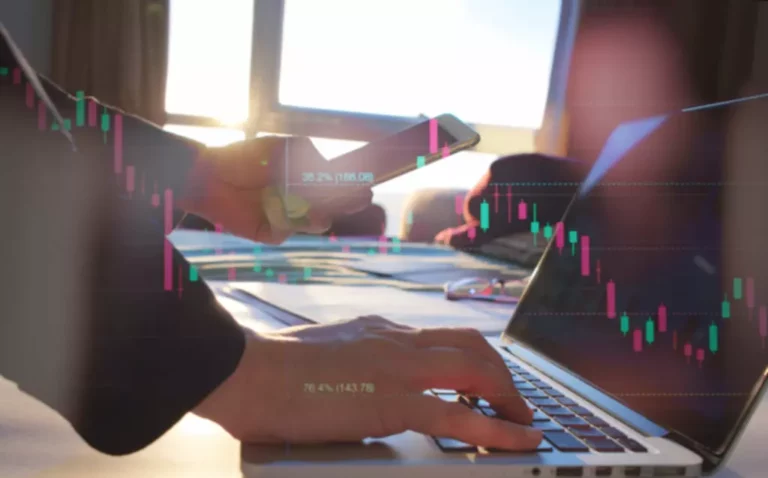Underlying liquidity will begin to tell the story of how liquid an ETF could be, no matter what the average daily volume (ADV). For equity-based ETFs, a first step is to examine the top 10 holdings to see if they are “household” names. If they are not, you may want to investigate further, utilizing a tool such as Bloomberg’s implied liquidity field listing. Unlike ETFs, What is an ETF liquidity provider which are traded on exchanges like stocks, mutual fund shares are bought and sold directly with the fund at the day’s closing NAV. The real-time trading feature of ETFs provides intraday liquidity, allowing investors to execute trades throughout the trading day. Alternatively, mutual funds offer end-of-day liquidity, with all orders processed at the closing NAV.
He is a CFA charterholder as well as holding FINRA Series 7, 55 & 63 licenses. He currently researches and teaches economic sociology and the social studies of finance at the Hebrew University in Jerusalem. Liquidity Provider should present complete order book via trading platform and via FIX protocol, assuring access to the historical tick data of each level of the order book. Many or all of the products featured here are from our partners who compensate us. This influences which products we write about and where and how the product appears on a page.
But to us, the single most important thing to consider about an ETF is its underlying index. Nowadays a multi-asset liquidity and deep order book is a must. But chances are that the funds you’re eyeing are from one of the big three. As with any investment, consider how soon you’ll need the money you plan to invest.
In a general sense, a liquidity provider connects customers with the institutions that issue an asset. Liquidity is a crucial idea in the market since it helps to keep costs down. Liquidity providers help with liquidity by keeping significant volumes of an asset, making it easily available for trade at a consistent price. In this case, the provider guarantees price feeds and the possibility of executing leveraged CFD orders. Brokers rely on liquidity providers to provide smooth trading conditions and asset availability. One of the key features of ETFs is that the supply of shares is flexible.
Can I sell my ETF anytime?
The reliable partner should also offer time priority execution and full post-trade transparency (MiFID compliant). Our partners cannot pay us to guarantee favorable reviews of their products or services. In any case, the investor will have to contend with the tax issue. If the ETF was held in a taxable account, the investor will owe taxes on any capital gains. As for ETFs that are based on hot investment trends, examples include Robotics & Artificial Intelligence ETF (BOTZ) or the Drone Economy Strategy ETF (IFLY). The choices in the ETFs space include traditional index ETFs based on U.S. and international equity indexes and subindexes, and others that track benchmark indices in bonds, commodities, and futures.
Some aim for broad market exposure, while others take risks in an attempt to outperform the market. You can find all this information in the offering prospectus, fact sheet of any ETF, or on the “Portfolio Composition” tab of Fidelity’s fund pages. Newer players in the financial markets frequently misunderstand some crucial aspects, and an ETF is one of the hardest instruments to understand. Beginner investors often confuse two levels of ETF liquidity. This is why it’s important to clarify and understand how to determine ETF liquidity.
Spreads. Minimum spreads (starting from $0. are among the characteristics of a trustworthy provider.
Here, buying or selling ABC shares would not receive prices as favorable, and trading large amounts could noticeably change the price. Through this simplified example, it’s evident how liquidity impacts the ease of trading and the stability of the market price, highlighting its importance in investment decisions. Liquidity providers should offer stable and reliable feeds without any spikes or gaps on the charts.

There are several ways to figure out the liquidity of a fixed income or derivative-based ETF. ETF liquidity providers are intermediaries between funds and exchanges. They are approved partners and market-makers who buy shares from ETF funds directly.
The sudden surge in demand could drive the share price of the ETF sky-high, deviating from the actual value of the underlying assets or its NAV. The “secondary market” liquidity seen on exchanges is important for ETF investors and traders. However, unlike stocks, ETFs possess another layer of liquidity considerations because of how they are created.
Primary market liquidity
As a result, liquidity providers compete against each other for order flow, and each financial institution chooses which LPs get which orders. Be aware of an ETF’s risks, outside of whatever happens in the market. These include liquidity — how easily you can buy or sell it when the time comes — and the potential of it closing down.

The latter can happen if a fund hasn’t brought in enough assets to cover administrative costs. Exchange
The marketplace where securities, commodities, derivatives and other financial tools such as ETFs are traded. Exchanges, such as stock exchanges, allow for fair and orderly trading and efficient circulation of securities prices. Exchanges give firms looking to market publicly listed securities the platform to do this. 2022 was a tough year for the crypto industry as the crypto winter and bear markets took their toll.
Typically, the portfolio involves 50,000 or 100,000 shares as determined by the ETF sponsor. The AP then turns the basket over to an ETF distributor and a custodian. In exchange for the basket of securities, the ETF custodian provides shares of the ETF to the AP at the net asset value. However, even funds with limited trading volume can trade at tight spreads if the underlying securities of the fund are liquid.
Authorized participants (APs) can create or redeem ETFs and exchange the “baskets” of the ETF’s underlying securities for new ETF shares from the fund issuer. Liquidity is an important characteristic for all financial instruments. For both investors and brokers, ETF liquidity is absolutely critical. Investors must be confident in their ability to purchase and sell shares at market prices promptly. Likewise, brokers need to understand who can offer the most liquidity in order to persuade private investors to utilize their platform. To assess secondary market liquidity, follow an ETF at different times of day, over various time periods, and note how it’s affected by market environments.
- Sometimes, fund managers will buy only some—not all—of the stocks or bonds in an index.
- Major players and authorized partners are primarily concerned with basic liquidity.
- Liquidity is a crucial idea in the market since it helps to keep costs down.
- Adam Hayes, Ph.D., CFA, is a financial writer with 15+ years Wall Street experience as a derivatives trader.
- The views and strategies described in our content may not be suitable for all investors.
Understanding how these factors affect an ETF’s liquidity and, therefore, how its profitability will improve results is especially important in environments where every cent counts. Liquidity is one of the most important features of exchange-traded funds (ETFs), though frequently misunderstood. An ETF’s liquidity refers to how easily shares can be bought and sold without impacting the ETF’s market price. An ETF’s liquidity is crucial because it impacts trading costs and helps determine how closely the ETF’s price tracks its underlying assets.
Bid-Ask Spread
The difference between the highest price a buyer is willing to pay for an asset and the lowest price the seller will accept to sell. Bid-ask spreads are a key measure of the liquidity of an asset or security. Liquidity
The ability to quickly buy or sell an investment in the market without impacting its price.
A liquidity provider (LP) is responsible for the market balance and minimum gaps between the ask and bid prices. Furthermore, providers make sure investors’ bids or ask offers are executed immediately, otherwise, a buyer or seller needs to wait for the reaction of natural buyers and sellers, facing possible losses. https://www.xcritical.in/ We offer deep institutional liquidity on 5000+ global instruments including forex, indices, commodities, shares, and ETFs, enabling Brokers and Banks to diversify their instruments portfolio. We are able to offer significantly improved spreads and much lower fees for retail brokers working in STP/ECN models.

Comentarios recientes